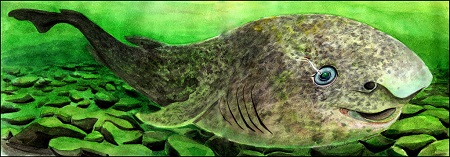The Greenland shark, a big and slow-moving deep-ocean predator that prowls the frigid waters of the Arctic and North Atlantic, can claim the distinction of being the planet’s longest-living vertebrate, with a lifespan perhaps reaching about 400 years.
Its extremely sluggish growth rate, about four-tenths of a inch (1 cm) per year, had already tipped off scientists that it lived a very long time, and research published on Thursday calculated the Greenland shark’s lifespan for the first time, according to Reuters
Danish marine biologist Julius Nielsen said radiocarbon dating that analyzed the shark’s eye lens found that the oldest of 28 sharks studied was likely about 392 years old, with 95 percent certainty of an age range between 272 and 512 years.
Females astoundingly did not reach sexual maturation until they were at least 134 years old, Nielsen said.
The Greenland shark, up to about 18 feet long, is among the largest carnivorous sharks.
“This species is completely overlooked, and only a few scientists in the world are working with this species,” Nielsen a University of Copenhagen doctoral student who led the study said.
“Our findings show that even though the uncertainty is great that they should be considered the oldest vertebrate animal in the world,” Nielsen added.
Nielsen said the vertebrate with the longest-known lifespan until now was the bowhead whale, topping 200 years.
Greenland sharks have a plump elongated body, round nose, relatively small dorsal fin, sandpaper-like skin and gray or blackish-brown coloration. They are slow swimmers and are nearly blind, but are capable hunters, eating fish, marine mammals and carrion.
They are known to be relatively abundant throughout the North Atlantic and Arctic, particularly from eastern Canada to western Russia. They occasionally are spotted by deep-sea robotic submarines at latitudes further south, such as in the Gulf of Mexico. They have been observed in depths down to 1.4 miles (2.2 km).
H.Z

